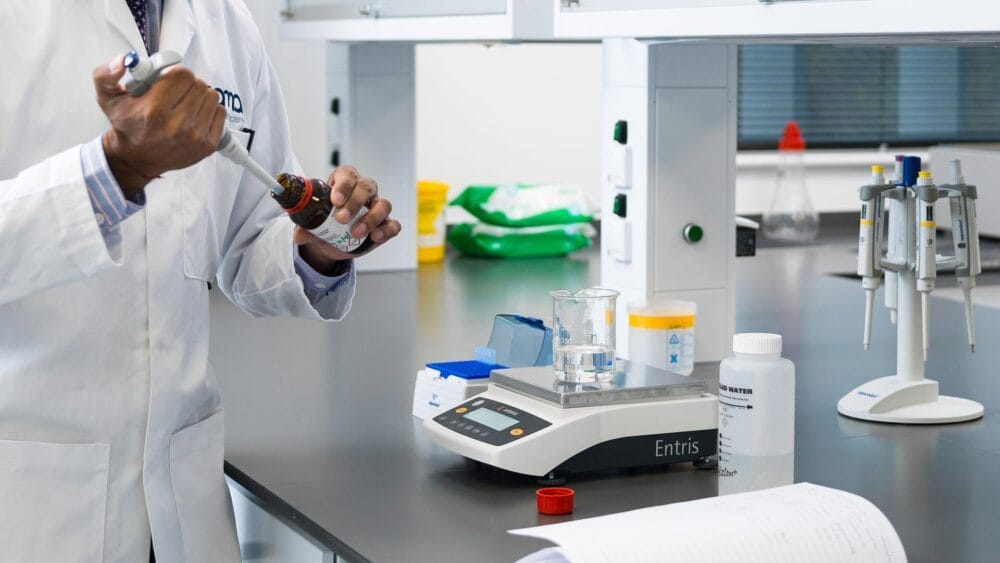Posted
28th October 2021
Research
In this week’s research article, we share a new wide-ranging systemic review highlighting two emerging approaches to prevent the spread of SARS-CoV-2 in hospitals: portable air disinfection units and PPE surface disinfection.
A new wide-ranging systematic review provides an overview of biocides aimed to decontaminate air, skin and other biological surfaces, and environmental surfaces (including PPE) potentially contaminated with SARS-CoV-2. The review concluded that a wide range of disinfectants have activity against the SARS-CoV-2 virus, which is not known for its hardiness. And highlighted a couple of emerging approaches to prevent the spread of SARS-CoV-2 in hospitals: the use of portable air disinfection units, and PPE surface disinfection.
The review included a helpful section on the survival properties of the SARS-CoV-2 virus, showing that it can survive for hours to days on surfaces. The conditions used to test the stability of the virus make a big impact on survival times, suggesting that environmental parameters will influence the degree to which contact transmission of the virus comes into play.
RELATED ARTICLE: The impact of Clinell Universal on reducing SARS-CoV-2 contamination in England’s hospitals
A wide range of disinfectants have been shown to have efficacy against SARS-CoV-2 for surface disinfection. This includes alcohol, aldehydes, quaternary ammonium compounds, phenols, chlorine-based agents, and others. There’s also a small section of the review highlight some early-phase work on antimicrobial surfaces coatings having some activity against SARS-CoV-2, which is promising for future applications.
The review summarised quite a few studies that have evaluated the ability to decontaminate the skin and other biological surfaces potentially contaminated with SARS-CoV-2. The evidence base is limited, but it seems that alcohol and povidone-iodine are effective skin disinfectants, with chlorhexidine gluconate showing less efficacy in laboratory scale studies. The review covered a small number of articles that looked at different approaches to address air potentially contaminated with SARS-CoV-2. UV is the most studied and probably most reliable option, although others have been evaluated. The review did not cover air filtration approaches, which may be more effective than trying to disinfect the air with a chemical or physical process.
RELATED ARTICLE: The cost-effectiveness of temporary patient isolation rooms in reducing HCAI
Finally, methods to decontaminate the surface of PPE were reviewed. Most of the time, PPE is used for a single patient encounter and then discarded. During the pandemic, ‘sessional’ use of PPE became much more common, that is the use of the same item of PPE to care for multiple patients. Also, reusable PPE that needs to be decontaminated became more widely available during the pandemic. Several different methods show promise for the decontamination of PPE, including hydrogen peroxide vapour, ozone, and UV.
Overall, the review provides a helpful summary of the various decontamination approaches available for air, skin, and surfaces potentially contaminated with SARS-CoV-2. Help spread the word by sharing this article on social media.
SHARE THIS ARTICLE
Tags
Latest News
Introducing HEXI HUB: A seamless transition in our product line
We’re pleased to announce an update to our product offering…
Innovative solutions for tackling Carbapenemase-producing Enterobacteriaceae (CPE) at King’s College Hospitals
King’s College Hospital NHS Foundation Trust, one of London’s largest…
Gloves Off: reducing unnecessary plastic waste during environmental cleaning and disinfection
In this blog, Dr Phil Norville discusses the momentum-gaining ‘Gloves…
Gloves Off: Navigating SDS sheets and skin safety claims in environmental decontamination products
In this blog, James Clarke (Head of R&D, Science &…




